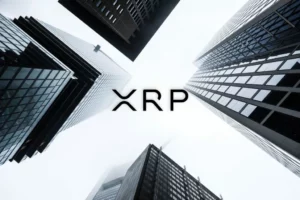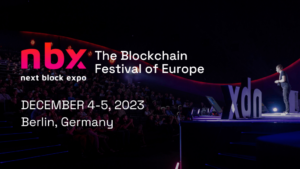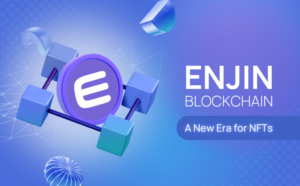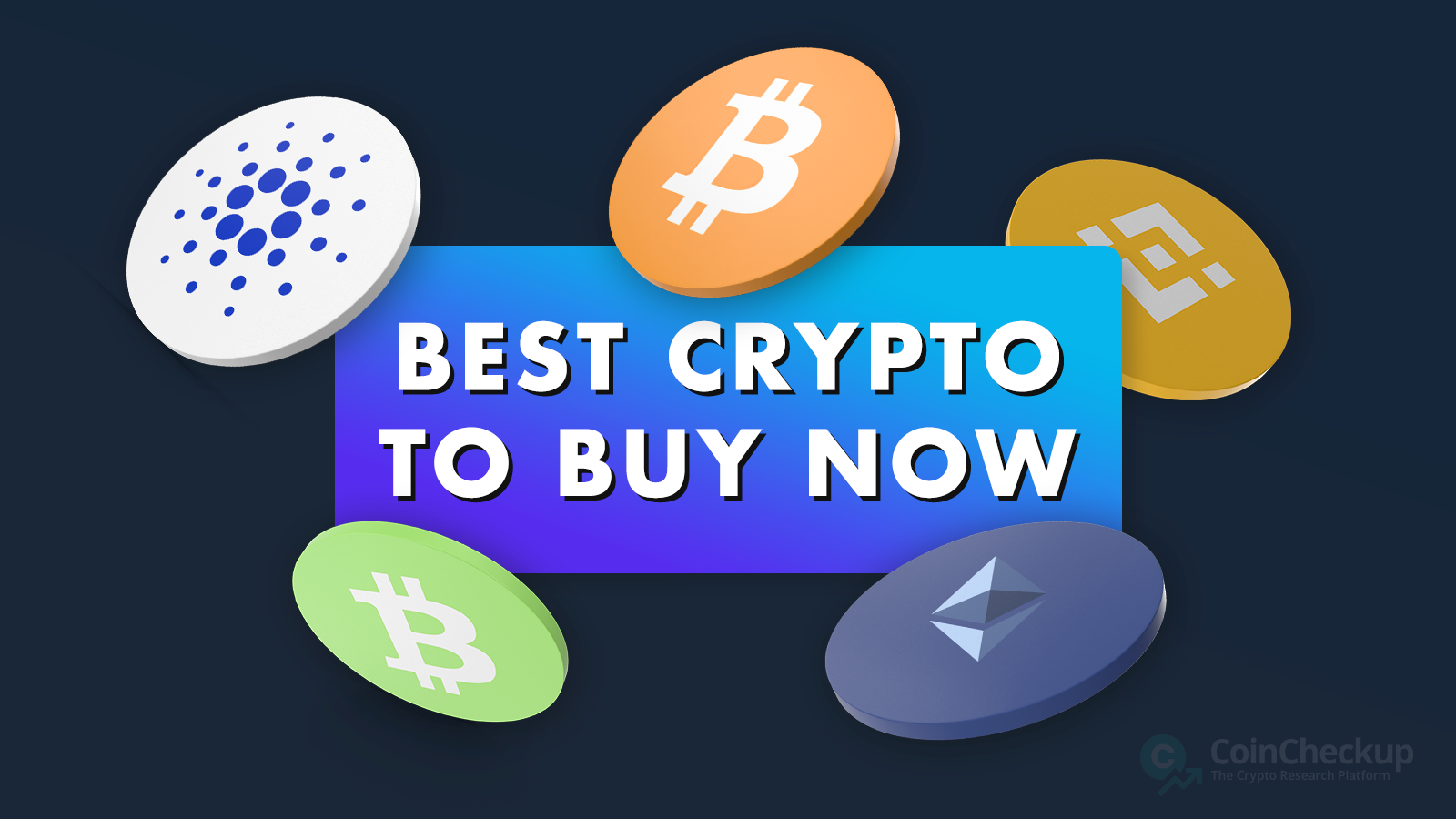
Are you looking to invest in cryptocurrencies but unsure which one to buy? With so many options available, it can be overwhelming to decide how to invest your money. That’s why we’ve compiled a list of the best crypto to buy now, based on factors such as project developments, price performance and market capitalization, as well as the overall potential for growth.
In this article, we’ll take a closer look at the most promising cryptocurrencies, including staples such as Bitcoin and Ethereum, and a combination of several other promising crypto projects. We’ll discuss their features, advantages, and potential drawbacks, as well as provide insights into market trends. Whether you’re a seasoned investor or just starting out, this article will help you make an informed decision about the best crypto to buy now.
So, let’s dive in and explore the best cryptocurrencies to invest in 2023:
- Avalanche – A smart contract platform rivaling Ethereum
- Lido – The leading liquid staking solution for Ethereum, Solana, and others
- Litecoin – A leading alternative to Bitcoin
- Bitcoin – The world’s oldest and largest crypto
- Ethereum – The leading DeFi and smart contract platform
- Solana – One of the fastest and cheapest L1 blockchains
- XRP – A leading crypto-powered payment solution
- BNB – The native asset of the BNB Chain and Binance ecosystem
- Cosmos – A leading interoperability-focused blockchain projects
- Shiba Inu – A NFT, DeFi, and blockchain gaming project
- Polygon – A popular scaling solution for Ethereum
- Filecoin – A decentralized cloud computing solution
Best cryptos to buy right now
The following three cryptocurrency projects highlight our investment selection thanks to important developments and upcoming events that make them especially interesting to follow in the near future. These projects are updated each week based on the most recent developments and trends taking place in the crypto market.
1. Avalanche
Avalanche is a cryptocurrency and blockchain platform designed to provide high-speed, low-cost transactions for decentralized applications (dApps) and enterprise use cases. The Avalanche network is built on a DAG-optimized consensus mechanism called Avalanche, which uses a novel approach to achieving consensus among nodes on the network. This allows the network to process transactions quickly and efficiently, with the potential for over 4,500 transactions per second (TPS).
Avalanche uses its native token, AVAX, as a means of value transfer and to pay for transaction fees on the network. AVAX can also be staked by node operators to help secure the network and earn rewards in the form of additional tokens.
One of the key features of Avalanche is its support for interoperability between different blockchains, which allows for the transfer of assets and data between different networks. This is achieved through a technology called the Avalanche-X bridge, which enables cross-chain communication and allows developers to build dApps that can interact with multiple blockchains.
Why Zilliqa?
In April, the Avalanche team announced the launch of the Spruce Subnet, an initiative aiming to offer institutions a new of exploring blockchain rails, tokenization, and decentralized applications. The Spruce Subnet launched in partnership with several institutional partners, including T. Rowe Price, WisdomTree, and Wellington Management.
https://twitter.com/avax/status/1646177765211930625
The announcement follows the launch of Avalanche Evergreen earlier in the month, meant to provide institutions with tools to leverage the power of blockchain, interoperability, and composability.
Additionally, the second iteration of the Avalanche Summit 2 is slated for May 3 to May 5, giving the Avalanche community an opportunity to familiarize themselves with new developments and roadmap goals for the Avalanche ecosystem. The Avalanche Summit is the largest yearly event for the Avalanche ecosystem.
2. Lido DAO Token
Lido is a DeFi project that allows users to earn rewards on their cryptocurrency holdings by staking them on several blockchain networks, including Ethereum, Polygon, Solana, Polkadot, and Kusama.
Staking is the process of locking up cryptocurrency as collateral to help validate transactions and maintain the security of a blockchain network, and in return, stakers receive rewards in the form of additional cryptocurrency.
Users that stake their ETH with Lido receive a tokenized representation of their staked ETH – called stETH – at a 1:1 ratio. StETH represents the user’s share of the total ETH being staked in the Ethereum network, and it can be freely traded on cryptocurrency exchanges.
One of the benefits of using Lido is that it allows users to earn rewards on their staked ETH without having to run their own staking node, which can be technically complex and require 32 ETH, which is out of reach for most cryptocurrency users. Instead, Lido pools user funds together to create a large validator node, with each user receiving a share of rewards based on their pool contribution. While Ethereum is by far the largest staking pool run by Lido, tokenized versions of other supported tokens are also available (stSOL for Solana, stDOT for Polkadot, etc.).
The Lido project is governed by a decentralized autonomous organization (DAO) that is controlled by LDO token holders, and LDO is used to incentivize participation in the governance process. Overall, Lido aims to make staking more accessible and user-friendly for the average cryptocurrency holder.
Why Lido DAO Token?
In February, the Lido developers announced a new version of the staking protocol, dubbed “Lido V2”, which will allow users holding stETH to withdraw from Lido at a 1:1 ratio. The update is expected to roll out in mid-May, according to the latest update from the Lido team.
https://twitter.com/LidoFinance/status/1635739571227951117
The update was initially slated for late April, but smart contract audits and testnet testing delayed it by a few weeks. Here’s how the devs explained the reason for the delay:
“In addition to this, stETH withdrawals won’t launch on mainnet until all audits concerning on-chain code are completed (expected end of April).
Adding another 2 weeks as a safety margin, the current expectation is for mainnet withdrawals to be live around mid May.”
As of writing, Lido is by far the largest liquid staking solution for Ethereum, accounting for over $11 billion worth of ETH. For context, the total staked ETH amount in the Beacon Deposit contract is just over $37 billion.
3. Litecoin
Litecoin is a peer-to-peer digital cryptocurrency that was created in 2011 by Charlie Lee, a former Google engineer. It was designed to be a faster and more lightweight alternative to Bitcoin.
One of the main advantages of Litecoin is its faster transaction processing times compared to Bitcoin. Litecoin transactions are processed in approximately 2.5 minutes, compared to Bitcoin’s average block time of 10 minutes. This allows for faster confirmation of transactions and potentially higher transaction throughput.
Litecoin also uses a different mining algorithm than Bitcoin, known as Scrypt, which is designed to be more memory-intensive and less susceptible to centralized mining. This means that Litecoin can be mined using standard consumer-grade hardware, whereas Bitcoin mining requires specialized equipment and significant energy consumption.
Why Litecoin?
Litecoin is up over 70% in the past 6 months, more than any other coin in the top 20. However, the coin lost about 2% in the past 30 days. Whereas the total cryptocurrency market cap increased by over 6%, Litecoin lost more than 2% in the same period. This has likely created a good opportunity for buying the dip.
https://www.youtube.com/watch?v=eziN2zytvKE
Some investors believe that Litecoin’s positive market performance in the past couple of months could be a precursor of things to come as the next Litecoin halving approaches. According to TradingView, previous halvings saw Litecoin rally considerably in the period before and after the halving event, which could be the case again.
The next halving is slated for August 8th, 2023, and will reduce mining rewards from 12.5 LTC to 6.25 LTC.
The best cryptocurrencies to invest in 2023
4. Bitcoin
Bitcoin (BTC) is the original decentralized digital currency, enabling peer-to-peer transactions without the need for intermediaries such as banks or financial institutions. It was created in 2009 by an unknown person or group of people using the pseudonym Satoshi Nakamoto. Bitcoin was the first digital currency to eliminate the double spending problem without resorting to any central intermediaries.
Bitcoin transactions are recorded on a public ledger called the blockchain, which is maintained by a network of computers around the world. This means that the transactions are secure and transparent, as anyone can view them but they are also anonymous, as the identity of the participants in the transaction is not revealed.
BTC can be bought and sold on cryptocurrency exchanges, and they can be stored in a digital wallet, which is a software program that securely stores private keys that are required to access and transfer the currency.
Bitcoin is often referred to as “digital gold” or a store of value, as it has a limited supply of 21 million coins, and its value is determined by market demand. Some people also see it as a hedge against inflation or a way to diversify their investment portfolio. It is by far the largest cryptocurrency by market cap in the industry, accounting for the value of more than 40% of all digital assets in circulation combined, making it arguably the most popular crypto to buy.
Why Bitcoin?
Bitcoin is the oldest and most widespread cryptocurrency in the world. These qualities give it certain characteristics that virtually every other cryptocurrency lacks. For starters, Bitcoin is owned by millions of people around the world. According to an Intotheblock report from 2022, there are about 40 million Bitcoin holders in total.
Secondly, Bitcoin has successfully withstood the test of time. While thousands of crypto projects have come and gone in the nearly 15 years since the first private cryptocurrencies were created, Bitcoin has only increased its market cap, number of addresses, and adoption among both individuals and institutions.
Bitcoin has shown impressive performance over the past couple of days – the price of Bitcoin increased over +28% in the past week, reaching a nine-month high of over $28,200. The recent price increase is particularly interesting, as it comes at a time when equities and other traditional assets have been struggling, primarily due to the issues permeating the banking sector. Bitcoin’s price has been closely related to the market performance of equities over the past couple of years, so the recent price surge could be interpreted as Bitcoin breaking that correlation and becoming a safe haven asset and hedge against traditional markets.
https://www.youtube.com/watch?v=o0TolOfZyao
Finally, the next Bitcoin halving event is approaching and is expected to take place in late March 2024. Bitcoin halving is an event that halves the rewards miners received for each block. In the next halving, the fourth one in Bitcoin history, this reward will drop from 6.25 BTC to 3.125 BTC.
Historically, each Bitcoin halving cycle has brought new all-time highs, supporting the argument of those that advocate buying Bitcoin ahead of a halving event. Here’s a quick breakdown of the highest and lowest prices in each cycle as well as the BTC price at the time of each halving:
| Lowest Price | Highest Price | BTC Price at Date of Halving | |
| 1st Halving Cycle (Nov 2012 – Jul 2016) | $12.4 | $1,170 | $12.3 (Nov 28, 2012) |
| 2nd Halving Cycle (Jul 2016 – May 2020) | $535 | $19,400 | $680 (Jul 9, 2016) |
| 3rd Halving Cycle (May 2020 – Mar 2024)* | $8,590 | $67,450 | $8,590 (May 11, 2020) |
5. Ethereum
Launched in 2015 by Vitalik Buterin and a team of developers, Ethereum is a decentralized, open-source blockchain platform that allows developers to build decentralized applications (dApps) and smart contracts.
Ethereum has a wide range of use cases beyond just a store of value or medium of exchange. Ethereum’s smart contract functionality allows developers to build dApps that can run without the need for intermediaries, like centralized servers or institutions.
The Ethereum platform has gained widespread adoption and has become the backbone of the decentralized finance (DeFi) industry. DeFi applications built on Ethereum allow users to access financial services without relying on traditional banks or financial institutions. Ethereum’s smart contract functionality has also enabled the creation of non-fungible tokens (NFTs), which have gained popularity in the digital art and gaming worlds.
https://www.youtube.com/watch?v=rAeFQATUrS4
While Ethereum has a strong community and has been highly influential in the cryptocurrency industry, it also faces challenges, such as scalability issues and high gas fees. These issues have spurred the development of various Layer 2 scaling solutions. In the long run, future updates are supposed to massively increase Ethereum’s throughput bringing the transaction per second (TPS) figure from 15 to 100,000.
Why Ethereum?
Following last year’s Merge, which saw Ethereum transition from Proof-of-Work (PoW) to Proof-of-Stake (PoS), the next major upgrade to hit the Ethereum network is slate to go live on April 12th. “Shapella”, as the new upgrade is called, will unlock ETH locked in the Beacon Deposit Contract, giving validators a chance to withdraw their assets. At the moment, there is over $26 billion worth of ETH locked in the contract. The dev team commented on the upcoming upgrade:
“Full withdrawals will be available for exited validators, whereas partial withdrawals will be available for active validator balances in excess of 32 ETH.“
The new update has a different name for each of the layers – it is called “Capella” on the consensus layer and “Shanghai” on the execution layer – and devs combined the two as “Shappella”.
Recently, the supply of Ethereum on cryptocurrency exchanges has plunged by over 35% since the Merge upgrade, which suggests that users are withdrawing their ETH as Shanghai approaches. Typically, exchange outflows are considered a bullish sign, which is reflected in our algorithmically generated ETH price prediction as well.
In addition, the whales have been accumulating Ethereum at a greeted pace in light of the upcoming network update. According to a recent deep dive written by Cointelegraphs’s Yashu Gola, Ethereum is nearing a potential breakout that could push the price of ETH above $6,000.

6. Solana
Solana is a cryptocurrency and blockchain platform that was created to provide a fast, secure, and scalable infrastructure for decentralized applications (dApps) and token issuance. It was launched in March 2020 by Solana Labs, and quickly grew to become one of the largest blockchain networks in the sector.
Solana uses a unique consensus mechanism called Proof of History (PoH) which enables it to process thousands of transactions per second while maintaining a low transaction fee. This makes it one of the fastest and most cost-effective blockchains in existence.
In addition to its fast transaction processing speed, Solana also offers smart contract functionality and is fully compatible with the Ethereum Virtual Machine (EVM). This allows developers to build and deploy dApps on Solana using popular programming languages such as Rust, C++, and JavaScript.
https://www.youtube.com/watch?v=X0NyrX8GQBE
The native cryptocurrency of the Solana network is called SOL, which is used as a medium of exchange and a store of value within the ecosystem. SOL is also used to pay for transaction fees and other network services.
Following explosive growth in 2020 and 2021, Solana hit a rough patch in 2022 due to the broader crypto winter. The negative market activity for SOL was exacerbated following the collapse of the FTX exchange, which was one of the biggest investors in Solana. The SOL coin fell all the way down to $10 in late 2022 (95% removed from its ATH of ~$260), but has since recovered some of its losses.
Why Solana?
Despite losing a significant chunk of its value during the 2022 crypto winter and particularly following the FTX debacle, there is still significant development activity taking place in the Solana ecosystem.
On April 6, the Solana Foundation technical lead Jon Wong announced a massive improvement in how NFTs are minted on the blockchain. The newly-introduced state compression introduces a new way of storing data on-chain and slashes NFT minting costs by orders of magnitude.

Another encouraging sign for broader Solana adoption came from the Crypto.com exchange, which announced on April 10 that Crypto.com users will be able to stake their SOL for up to 5% APR. The exchange added that there are no fixed terms or minimum staking amount for users.
In another sign of continued development interest in Solana, Helium announced they would be moving to the Solana blockchain on April 18th. According to the Helium team, the move to Solana will allow the project to benefit from the governance structure and tap into a robust DeFi and NFT ecosystem. In addition, “greater scale, transaction speed, & network reliability” will enable Helium’s Oracles to enhance Proof-of-Coverage and Data Transfer.
According to our Solana price prediction algorithm, the price of SOL could see a move back to the high $30s in the short to medium term.
7. XRP
XRP is a digital cryptocurrency that was created by Ripple Labs in 2012. It is used as a means of payment and transfer of value on the Ripple payment protocol, which is designed to enable fast and secure transactions between financial institutions, as well as individuals.
XRP is unique in that it is not based on the blockchain technology used by many other cryptocurrencies. Instead, it uses a distributed consensus ledger called the XRP Ledger, which is maintained by a network of validators. This allows for faster transaction processing times and lower fees compared to traditional payment methods.
XRP has been popular among cryptocurrency traders and investors due to its high liquidity and clear potential for broader adoption, especially as a remittance solution. However, it has also been the subject of controversy and legal action, with US regulators alleging that it is a security and should thus be subjected to securities regulations. This has somewhat hindered the potential of XRP as an investment, and handcuffed Ripple’s growth as a company.
Why XRP?
Last week, the XRP cryptocurrency outperformed all other top 100 digital assets, gaining over +20%. The reason for the sudden price increase was multi-faceted and could have a significant impact on XRP’s price movement going forward.
For starters, the US Securities and Exchange Commission (SEC) vs Ripple trial has taken a turn that many believe could be in Ripple’s favor. According to the founder of the Crypto Law website, John E. Deaton, “no reasonable jury” could find Ripple and its executives guilty of knowingly selling unregistered securities, as the SEC itself was unsure whether XRP was a security or not.
https://www.youtube.com/watch?v=OR1prvAD9Zo&t=3s
This could have major implications for the high-profile legal battle going forward – at the moment, it seems that the SEC is and will remain incapable of supplying evidence that would prove that Ripple’s leading executives were knowingly selling a security.
Secondly, Coinbase’s Chief Legal Officer Paul Grewal recently stated that the exchange would be open to relisting XRP if Ripple wins the SEC case. During his Thinking Crypto appearance, he also commended Ripple’s defense and said they are doing a great job.
https://twitter.com/ali_charts/status/1637389951019909121
Finally, increased whale activity in recent weeks could suggest that XRP is heading for more positive price activity in the future. According to data from Santiment, about 50 investors bought $155 million worth of XRP in the past month. At the same time, both the number of transactions and the number of payments executed on the XRP Ledger increased substantially last week.
8. BNB
BNB (formerly Binance Coin) is a cryptocurrency created by the popular cryptocurrency exchange Binance. Binance is the largest cryptocurrency exchange in the world, allowing users to buy, sell, and trade a wide range of digital assets.
BNB was initially one of the ERC-20 tokens on the Ethereum blockchain but has since migrated to its own blockchain, known as BNB Chain. BNB is used as a utility token within the Binance ecosystem and has a variety of use cases. For example, users can use BNB to pay for transaction fees on the Binance exchange, receive discounts on trading fees, participate in token sales on Binance Launchpad, and purchase goods and services from merchants that accept BNB as payment.
One of the unique features of BNB is that it has a deflationary model. Binance uses a part of its profits each quarter to buy back and burn BNB tokens, reducing the total supply of the token over time. This mechanism is designed to create scarcity and increase the value of BNB over time, with the end goal of reducing the circulating supply of BNB from the initial 200 million to 100 million BNB.
Why BNB?
While Binance has been trying to distance itself from the BNB coin with moves such as the renaming from Binance Coin to BNB and stating that the project is open source and owned by the community, it is clear that the world’s largest exchange still has a large stake and say in how BNB is developed.
This means that an investment in BNB is indirectly an investment in the Binance broader ecosystem, at least in principle. And the Binance ecosystem is one of the quickest growing in the industry.
Last year, Arcane Research reported on the extent to which Binance has captured the crypto spot trading market. According to them, Binance’s share of the Bitcoin spot market trading volume surpassed 90% on December 28, more than double what it was at the beginning of 2022 (from 45% to 92%).
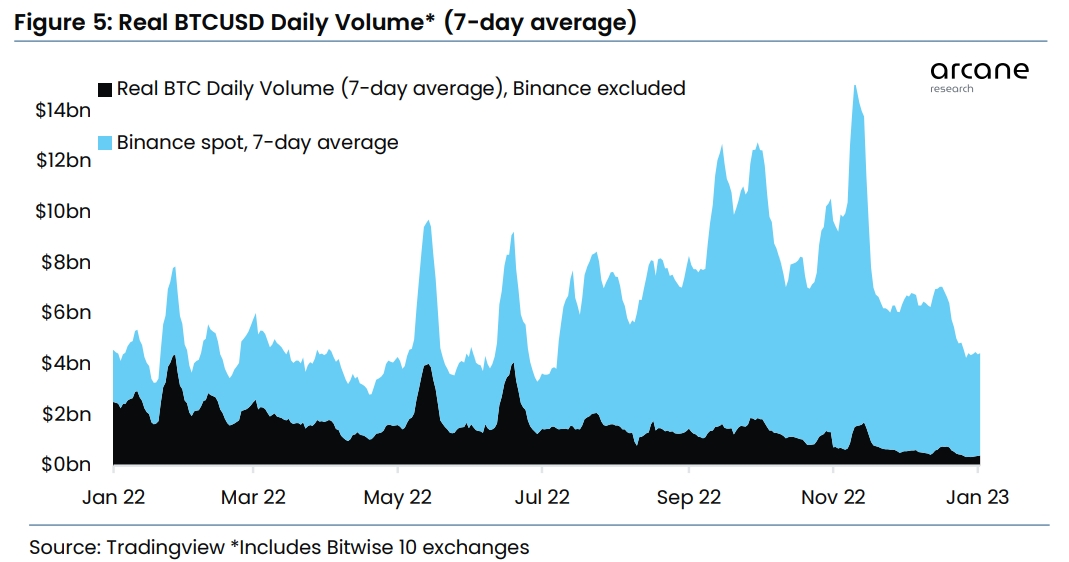
In addition to the exchange domination, the BNB Smart Chain (BSC) has also seen a massive rise in popularity in recent months. According to DeFi Llama, BSC is the third largest DeFi ecosystem in terms of total value locked (TVL) with $4.91 billion, trailing only TRON ($5.16B TVL) and Ethereum ($28.67B TVL).
Given these metrics, it’s hard to argue against BNB being a good investment. However, that could quickly change, especially if Binance faces more regulatory scrutiny in the future.
9. Cosmos
Cosmos is a blockchain project designed to enable the interoperability and scalability of different blockchain networks, dubbed the “Internet of Blockchains”. The native cryptocurrency of the Cosmos network is called ATOM.
Cosmos aims to address some of the key challenges facing the blockchain industry, including the lack of interoperability between different blockchain networks, scalability issues, and the need for greater efficiency in transaction processing.
The Cosmos network achieves interoperability by allowing different blockchains to communicate with each other through a shared hub called the Cosmos Hub, which acts as a central point of communication for different blockchains, enabling them to transfer assets and data between each other.
The Cosmos network also utilizes a PoS consensus mechanism, which allows for greater scalability and energy efficiency compared to PoW consensus mechanisms. Overall, Cosmos aims to create a more interconnected and scalable blockchain ecosystem, and the ATOM cryptocurrency is used to incentivize participation in the network and facilitate transactions.
Why Cosmos?
Last week, the Comos team announced that the V9 Lambda ugrade will go live on March 15th. The community proposal for the Lambda rollout was passed with 99.99% of the vote.
https://twitter.com/cosmoshub/status/1633153220070502401
The upgrade will introduce the concept of “replicated security (RS)” to the Cosmos ecosystem. RS will enable chains in the ecosystem to share validation resources for improved security. In addition, the upgrade will revamp staking yields – from the upgrade on, ATOM stakers can expect 24.37% annual returns.
In addition, Interchain Foundation has recently announced new participants will be joining the Builders Program in 2023. Interchain Foundation is an organization aimed at developing and maintaining an “interoperable multichain future” on Cosmos
In total, the program received 80 applications, out of which 18 had been selected for the program. The teams are focusing on various aspects of blockchain applications, from DeFi and infrastructure to gaming and non-fungible tokens (NFTs).
It is worth mentioning that the program saw more than 50 teams join the Builders Program in 2022 following its June launch. The interest in building on the interoperability-focused ecosystem and using the Inter-Blockchain Communication Protocol (IBC) bodes well for the future of Cosmos.
10. Shiba Inu
Shiba Inu is a cryptocurrency that was created in August 2020 by an anonymous person or group of people under the pseudonym “Ryoshi”. It is an ERC-20 token on the Ethereum blockchain, which means it is a digital asset that is compatible with the Ethereum network and can be stored in any wallet that supports ERC-20 tokens.
Shiba Inu gained popularity in 2021 after it was listed on several cryptocurrency exchanges and gained attention on social media platforms like Twitter and Reddit. In fact, SHIB’s 2021 run is still one of the most impressive runs in crypto history, as the meme coin gained over 430,000x in a span of the year. It is often compared to Dogecoin, another meme-inspired cryptocurrency, as it features the Shiba Inu dog breed as its mascot.
However, unlike Dogecoin, the project aims to create a decentralized ecosystem for a variety of use cases, including decentralized exchanges, NFTs, and more. The development team has also created a Shiba Inu-themed decentralized exchange called ShibaSwap.
Why Shiba Inu?
With a circulating supply of roughly 550 trillion tokens and a market cap of over $7.5 billion, Shiba Inu is unlikely to reach milestones many users want to see, such as 1 dollar, 50 cents, or even 1 cent. The reason is simple, if SHIB were to reach 1 dollar, for instance, its market cap would be $550 trillion. That’s just not feasible.
However, the upcoming Shibarium layer 2 solution could change that in a big way. Shibarium is a scaling solution for Shiba Inu that aim to make transactions cheaper and faster. In addition, Shibarium will burn SHIB for each transaction made on the platform, which will introduce deflationary pressure and lower the total number of SHIB in circulation over time.
https://twitter.com/Shibtoken/status/1614754575604400132
Users hope that Shibarium will not only make it cheaper and more efficient for NFT and DeFi projects to leverage Shiba Inu, but also lead to a massive appreciation in the price of the Shiba Inu coin. Recently, the Shiba Inu team announced that the testing of Shibarium is already underway and added that the solution should be launching “soon”. If successful, Shibarium could be a major catalyst for Shiba Inu and one of the reasons why it could be one of the best coins to buy in 2023.
https://www.youtube.com/watch?v=AR94I1EmD-o
11. Polygon
Polygon, formerly known as Matic Network, is a Layer 2 scaling solution for Ethereum that aims to provide faster and cheaper transactions while maintaining the security and decentralization of the Ethereum network.
Polygon uses a PoS consensus mechanism to validate transactions, which reduces the energy consumption and environmental impact of the network compared to the PoW consensus, which is most prominently used by Bitcoin. Using Polygon, developers can build and deploy dApps with lower fees, faster transaction speeds, and a better user experience.
The native cryptocurrency of Polygon is MATIC, which is used for transactions, staking, and governance on the network. MATIC is an ERC-20 token, meaning it runs on the Ethereum blockchain and can be stored in any wallet that supports ERC-20 tokens.
Polygon has gained popularity in the cryptocurrency industry as a solution to Ethereum’s scalability issues and has been adopted by various dApps, including Aave, Sushiswap, and Curve Finance. The network has also partnered with other blockchain projects, including Polkadot and Chainlink, to enable cross-chain interoperability.
Why Polygon?
Polygon Labs president Ryan Watt announced last week that Polygon has partnered with Salesforce for an NFT-based loyalty program. Salesforce is one of the leading customer relationship management companies, providing sales, marketing, analytics, and e-commerce solutions to clients.
The news follows a similar announcement made by Warren Buffet-backed digital bank Nubank in October, which stated that they would be using Polygon to launch their own crypto – Nucoin – which would power the bank’s exclusive loyalty program.
In addition, the Polygon ID team has launched new Web3 identity tools with the aim of building “a more equitable internet that places identity at the center of it.”
https://twitter.com/0xPolygon/status/1630997045703049238
“Businesses can say goodbye to user data management headaches, and individuals can have discretion in using their personal data when builders build with Polygon ID,” explained the team in a Twitter thread.
Among other things, the new functionality will enable passwordless logins, issuance of elaborate proofs, using real-world credentials in Web3, and more.
The news follows the Polygon team’s announcement that Polygon zkEVM Public Beta will be launching on the Polygon mainnet on March 27. zkEVM, or zero-knowledge Ethereum Virtual Machine, is a virtual machine that generates zero-knowledge proofs to verify the correctness of programs.
Polygon’s zkEVM solution can execute smart contracts in a way that’s compatible with zero-knowledge-proof technology used by Ethereum. This means that developers can easily onboard dApps from Ethereum to Polygon’s zkEVM platform.
Here’s what the Poygon devs wrote about the upcoming update:
“True EVM-equivalence means that Ethereum can be scaled without resorting to half-measures. The best way to scale Ethereum is to preserve the existing Ethereum ecosystem: code, tooling, and infrastructure needs to just work. And that’s what Polygon zkEVM is aiming to achieve.”
12. Filecoin
Filecoin is a decentralized storage network that allows users to store, retrieve, and share data on a peer-to-peer basis. It is built on blockchain technology and is designed to be secure, efficient, and cost-effective.
Filecoin operates on a unique incentive system that rewards users for storing data on the network and for providing resources to the network, such as processing power and storage capacity. Users can earn Filecoin tokens by contributing to the network’s storage and retrieval functions, and these tokens can be used to pay for storage services or traded on cryptocurrency exchanges.
The decentralized nature of Filecoin means that users can access storage services without relying on a centralized provider, which can be more secure and reliable. Additionally, the use of blockchain technology ensures that all transactions on the network are transparent and immutable.
Filecoin has many potential use cases, including storing large datasets, hosting websites and applications, and archiving digital assets. It is seen as a promising solution for businesses and organizations that require secure and reliable data storage and an alternative to established centralized cloud computing solutions like Google Drive and Amazon Web Services.
Why Filecoin?
The 18th major upgrade of the Filecoin network, the long-awaited “Hygge” update, is launching on March 14th. The new upgrade will enable developers to deploy Ethereum virtual machine (EVM) smart contracts on the Filecoin platform using the FEVM.
https://twitter.com/Filecoin/status/1628229613913616385
In addition to the smart contract implementation, the launch of Hygge will also see the rollout of two new testnets for the Filecoin network, including Hyperspace (“a pre-production developer focused testnet”) and Wallaby (“a bleeding-edge testnet for early testing of the latest FVM features”) testnets.
The devs explained the significance of the upcoming update in a GitHub post:
“Existing Ethereum tooling will be compatible with Filecoin. User-deployed actors can interact with Filecoin built-in actors and access Filecoin functionalities. Developers can build various use cases like DataDAO, perpetual storage, lending market, Defi & so on Filecoin.”
| Native Asset | Launched In | Description | Market Cap* | |
| Avalanche | AVAX | 2020 | A smart contract platform rivaling Ethereum | $5.84 bln |
| Lido | LDO | 2020 | The leading liquid staking solution for Ethereum, Solana, and others | $1.91 bln |
| Litecoin | LTC | 2011 | A leading alternative to Bitcoin | $6.68 bln |
| Bitcoin | BTC | 2009 | The world’s oldest and largest crypto | $544 bln |
| Ethereum | ETH | 2015 | The leading DeFi and smart contract platform | $218 bln |
| Solana | SOL | 2020 | One of the fastest and cheapest L1 blockchains | $8.7 bln |
| XRP | XRP | 2012 | A leading crypto-powered payment solution | $23.4 bln |
| BNB | BNB | 2017 | The native asset of the BNB Chain and Binance ecosystem | $53.2 bln |
| Cosmos | ATOM | 2019 | A leading interoperability-focused blockchain project | $3.46 bln |
| Shiba Inu | SHIB | 2020 | NFT, DeFi, and blockchain gaming project | $5.91 bln |
| Polygon | MATIC | 2017 | A popular scaling solution for Ethereum | $9.2 bln |
| Filecoin | FIL | 2017 | A leading decentralized exchange platform | $1.99 bln |
Best crypto to buy for beginners
If you are just starting out in crypto, it is advisable to stick to cryptocurrency projects that are less prone to volatility and are generally more established. While this approach does have a downside, as it becomes much more difficult to expect triple-digit or larger gains, the major upside is that you are not exposed to projects that have a chance of failing and, thus, losing your entire investment.
In order to identify projects that are stable and thus feature low volatility, you can start by following the parameters listed below:
- The crypto asset has a market capitalization that places it into the cryptocurrency top 100 (roughly $400 million as of early 2023)
- The crypto asset is available for trading on multiple trading platforms and can be exchanged for fiat currencies
- The crypto asset boasts healthy liquidity ($100M/day and more), which allows you to execute buy and sell orders quickly and without slippage
- The crypto asset is part of a reputable crypto project with clear goals, a realistic roadmap, and products and services that look to address real-world problems
Some of the best cryptos to buy for beginners are those that follow the above criteria and have earned their standing in the crypto market due to robust security, popular products and services, and clear growth potential. Some beginner-friendly crypto investments are:
- Bitcoin
- Ethereum
- Litecoin
- Cardano
- BNB
It is worth noting that cryptocurrency investments are inherently risky, even if you stick to the biggest and most reputable projects. The reason for this is simple – the crypto sector is relatively new, and the landscape might look completely different in the future.
How we choose the best cryptocurrencies to buy
At CoinCheckup, we provide real-time prices for over 22,000 cryptocurrencies, with the list growing by dozens each day. As you can imagine, making a selection of a dozen top cryptocurrencies to buy out of such an immense dataset can be difficult and will for sure lead to some projects that should be featured being omitted. To minimize the chance of that happening, we follow certain guidelines when trying to identify the best cryptocurrencies to invest in.
Availability
One of the most important factors for any cryptocurrency investment is the crypto asset’s availability, meaning how easy it is to buy and sell it across various cryptocurrency exchanges. We tend to stay away from assets that are not available on major exchanges and require complex procedures to obtain.
Market Capitalization
Another important metric for identifying whether a crypto project is worth covering its market cap. A high market cap means that the project has reached a certain level of adoption from users, making it less risky to invest in.
Growth Potential
While this metric is mostly subjective, it is still an important metric on which we curate our selection. We won’t feature projects that we think are stagnating or have no real upside in the future.
The bottom line: What crypto to buy now?
The decision of which crypto to buy now is dependent on your own risk profile and investment goals. For some, investing in a crypto asset with a proven track record like Bitcoin is the only type of exposure to crypto they are willing to take on.
Meanwhile, those with a higher risk tolerance might see Bitcoin as too stable, looking instead toward newer and smaller projects that carry a higher degree of upside.
If you are looking for more investment ideas, check out our crypto price predictions section.
- SEO Powered Content & PR Distribution. Get Amplified Today.
- PlatoAiStream. Web3 Data Intelligence. Knowledge Amplified. Access Here.
- Minting the Future w Adryenn Ashley. Access Here.
- Source: https://coincheckup.com/blog/best-crypto-to-buy/
- :has
- :is
- :not
- $400 Million
- $UP
- 000
- 1
- 1:1 ratio
- 10
- 100
- 11
- 12
- 13
- 14
- 15 years
- 2%
- 20
- 200
- 2011
- 2012
- 2015
- 2016
- 2020
- 2021
- 2022
- 2023
- 2024
- 22
- 24
- 26th
- 28
- 30
- 32 ETH
- 35%
- 50
- 500
- 7
- 84
- 9
- 95%
- a
- aave
- Able
- About
- above
- Accept
- access
- accessible
- According
- Accounting
- Achieve
- achieved
- Achieves
- achieving
- across
- Action
- active
- activity
- actors
- acts
- added
- addition
- Additional
- Additionally
- address
- addresses
- adopted
- Adoption
- advantages
- advocate
- After
- against
- ahead
- aim
- aimed
- Aiming
- aims
- algorithm
- algorithmically
- All
- All Transactions
- all-time highs
- Allowing
- allows
- already
- also
- alternative
- Amazon
- Amazon Web Services
- among
- amount
- an
- analytics
- and
- and infrastructure
- announced
- Announcement
- annual
- Anonymous
- Another
- any
- anyone
- applications
- Applications (DApps)
- appreciation
- approach
- approaches
- approximately
- apr
- April
- Arcane
- Arcane Research
- ARE
- argue
- argument
- around
- Art
- article
- AS
- aspects
- asset
- Assets
- At
- ATH
- atom
- attention
- audits
- AUGUST
- autonomous
- availability
- available
- Avalanche
- AVAX
- average
- away
- back
- Backbone
- balances
- Bank
- Banking
- banking sector
- Banks
- based
- basis
- Battle
- BE
- beacon
- become
- becomes
- becoming
- been
- before
- Beginners
- Beginning
- being
- believe
- below
- benefit
- benefits
- BEST
- beta
- Better
- between
- Beyond
- Big
- Biggest
- Billion
- binance
- Binance Coin
- Binance exchange
- Binance Launchpad
- Bitcoin
- bitcoin and ethereum
- Bitcoin halving
- Bitcoin Holders
- Bitcoin mining
- Block
- Block time
- blockchain
- blockchain applications
- blockchain ecosystem
- blockchain gaming
- blockchain industry
- blockchain network
- Blockchain networks
- blockchain platform
- blockchain projects
- blockchain technology
- blockchains
- bnb
- BNB Chain
- BNB coin
- boasts
- both
- Bottom
- bought
- Breakdown
- Breaking
- breakout
- BREED
- BRIDGE
- Bringing
- broader
- brought
- BSC
- BTC
- btc price
- build
- builders
- Building
- built
- built-in
- Bullish
- burn
- businesses
- but
- Buterin
- buy
- Buying
- Buying Bitcoin
- by
- C++
- called
- came
- CAN
- cap
- Capacity
- capitalization
- carry
- case
- cases
- Catalyst
- Center
- central
- centralized
- certain
- chain
- Chainlink
- chains
- challenges
- Chance
- change
- characteristics
- Charlie
- Charlie Lee
- cheaper
- cheapest
- check
- chief
- Choose
- circulating
- Circulation
- clear
- clients
- closely
- closer
- Cloud
- cloud computing
- code
- Coin
- Coins
- Collapse
- Collateral
- COM
- combination
- combined
- come
- comes
- commission
- communicate
- Communication
- community
- Companies
- company
- compared
- compatible
- Completed
- completely
- complex
- computers
- computing
- concept
- confirmation
- Consensus
- consensus layer
- consensus mechanism
- Consensus Mechanisms
- considered
- consumption
- context
- continued
- contract
- contracts
- contributing
- contribution
- controlled
- controversy
- Correlation
- Cosmos
- Cosmos Hub
- Cosmos Network
- cost-effective
- Costs
- could
- Couple
- covering
- create
- created
- creation
- Credentials
- criteria
- Cross-Chain
- crypto
- crypto asset
- crypto investments
- Crypto law
- Crypto Market
- crypto projects
- crypto sector
- Crypto Winter
- Crypto.com
- cryptocurrencies
- cryptocurrency
- Cryptocurrency Exchange
- Cryptocurrency Exchanges
- Cryptocurrency Industry
- cryptocurrency market
- cryptos
- Currency
- Current
- curve
- Curve Finance
- customer
- customer relationship management
- cycle
- DAO
- DApps
- data
- data management
- data storage
- datasets
- Date
- day
- Days
- December
- Decentralization
- decentralized
- Decentralized Applications
- Decentralized Autonomous organization
- Decentralized Exchange
- Decentralized Finance
- decentralized finance (DeFi)
- decentralized-exchanges
- decide
- decision
- deep
- deep dive
- Defense
- DeFi
- DeFi ecosystem
- DeFi llama
- defi projects
- deflationary
- Degree
- delay
- Delayed
- Demand
- dependent
- deploy
- deposit
- designed
- determined
- Dev
- developed
- Developer
- developers
- developing
- Development
- development activity
- developments
- Devs
- different
- difficult
- digital
- Digital Art
- Digital Asset
- Digital Assets
- digital bank
- digital currency
- digital wallet
- discounts
- discretion
- discuss
- distance
- distributed
- diversify
- does
- Dog
- Dogecoin
- doing
- Dollar
- double
- down
- downside
- dozen
- dozens
- drawbacks
- drive
- Drop
- dubbed
- due
- during
- e
- e-commerce
- each
- Earlier
- Early
- earn
- earned
- easily
- easy
- ecosystem
- efficiency
- efficient
- efficiently
- Elaborate
- eliminate
- enable
- enabled
- enables
- enabling
- encouraging
- end
- energy
- Energy Consumption
- energy efficiency
- engineer
- enhance
- ensures
- Enterprise
- Entire
- environmental
- equipment
- Equities
- ERC-20
- especially
- established
- etc
- ETH
- eth price
- eth price prediction
- Ether (ETH)
- ethereum
- Ethereum blockchain
- Ethereum ecosystem
- ethereum network
- Ethereum Price
- Ethereum price prediction
- ethereum virtual machine
- Ethereum Virtual Machine (EVM)
- Ethereum's
- Even
- Event
- events
- Evergreen
- Every
- evidence
- EVM
- example
- exchange
- Exchanges
- Exclusive
- execute
- execution
- executives
- existing
- expect
- expectation
- expected
- experience
- explained
- explore
- Exploring
- exposed
- Exposure
- faces
- facilitate
- facing
- factors
- familiarize
- far
- FAST
- faster
- fastest
- feasible
- Feature
- featured
- Features
- February
- fee
- Fees
- few
- Fiat
- Figure
- Filecoin
- finance
- financial
- Financial institutions
- financial services
- Find
- First
- fixed
- focused
- focusing
- follow
- following
- follows
- For
- form
- Former
- formerly
- Forward
- Foundation
- founder
- Fourth
- from
- FTX
- FTX Exchange
- fully
- functionalities
- functionality
- functions
- funds
- future
- gaining
- Gains
- gaming
- GAS
- gas fees
- generally
- generated
- generates
- GitHub
- Give
- Giving
- Go
- goal
- Goals
- going
- good
- goods
- governance
- great
- greater
- greeted
- Group
- Growing
- Growth
- growth potential
- guidelines
- guilty
- had
- Halving
- Happening
- Hard
- Hardware
- Have
- having
- he
- headaches
- Heading
- healthy
- hedge
- helium
- help
- High
- high-profile
- higher
- highest
- Highlight
- highly
- Highs
- his
- history
- Hit
- holder
- holders
- holding
- Holdings
- hope
- hosting
- How
- How To
- However
- HTTPS
- Hub
- IBC
- ID
- ideas
- identify
- identifying
- Identity
- if
- imagine
- immense
- immutable
- Impact
- implementation
- implications
- important
- impressive
- improved
- improvement
- in
- incapable
- Incentive
- incentivize
- Including
- Increase
- increased
- indirectly
- individuals
- industry
- inflation
- Influential
- informed
- Infrastructure
- initial
- initially
- Initiative
- insights
- instance
- instead
- Institutional
- institutions
- interact
- interconnected
- interest
- interesting
- intermediaries
- Internet
- Interoperability
- into
- intotheblock
- introduce
- Introduces
- Inu
- Invest
- investing
- investment
- investment goals
- investment portfolio
- Investments
- investor
- Investors
- issuance
- issues
- IT
- iteration
- ITS
- itself
- JavaScript
- Job
- John
- join
- joining
- jpg
- june
- just
- Key
- keys
- known
- Kusama
- Labs
- Lack
- landscape
- Languages
- large
- larger
- largest
- Last
- Late
- latest
- launch
- launched
- launching
- Launchpad
- Law
- layer
- Layer 2
- layer 2 scaling
- layers
- LDO
- ldo token
- lead
- leading
- least
- Ledger
- Lee
- Legal
- Legal Action
- lending
- Level
- Leverage
- LIDO
- Lido DAO
- light
- lightweight
- like
- likely
- Limited
- Line
- Liquid
- liquid staking
- Liquidity
- List
- Listed
- Litecoin
- live
- Llama
- locked
- Long
- long-awaited
- Look
- looking
- losing
- losses
- lost
- Low
- low-cost
- lowest
- Loyalty
- Loyalty Program
- machine
- made
- Main
- mainnet
- maintain
- major
- make
- MAKES
- Making
- management
- many
- March
- march 2020
- March 2024
- Margin
- Market
- Market Cap
- Market Capitalization
- market performance
- Market Trends
- Marketing
- Markets
- massive
- massively
- Matic
- Matic Network
- max-width
- May..
- meaning
- means
- mechanism
- mechanisms
- Media
- medium
- medium of exchange
- meme
- meme coin
- Merchants
- Merge
- methods
- metric
- Metrics
- Mid
- might
- migrated
- Milestones
- million
- million worth
- millions
- mined
- Miners
- minimum
- Mining
- minted
- minting
- minutes
- model
- moment
- money
- Month
- months
- more
- more efficient
- most
- Most Popular
- MOUNT
- move
- movement
- moves
- moving
- much
- multichain
- multiple
- nakamoto
- name
- native
- Native Token
- Nature
- Near
- nearing
- nearly
- Need
- needs
- negative
- network
- networks
- New
- news
- next
- NFT
- NFTs
- no
- node
- Node Operators
- nodes
- non-fungible
- non-fungible tokens
- NON-FUNGIBLE TOKENS (NFTS)
- novel
- now
- Nubank
- number
- obtain
- october
- of
- offer
- Offers
- Officer
- often
- oldest
- on
- On-Chain
- Onboard
- ONE
- only
- open
- open source
- opens
- operates
- operators
- Opportunity
- Options
- or
- Oracles
- order
- orders
- organization
- Organization (DAO)
- organizations
- original
- Other
- our
- out
- outflows
- over
- overall
- own
- owned
- Pace
- parameters
- part
- participants
- participate
- participation
- particularly
- partnered
- partners
- Partnership
- passed
- past
- Patch
- Paul
- Pay
- payment
- payment methods
- payments
- peer to peer
- Peer-to-Peer Transactions
- People
- performance
- period
- Perpetual
- person
- personal
- personal data
- Place
- Places
- platform
- Platforms
- plato
- Plato Data Intelligence
- PlatoData
- PoH
- Point
- Polkadot
- Polygon
- Polygon zkEVM
- Polygon’s
- pool
- Pools
- Popular
- popularity
- portfolio
- PoS
- positive
- Post
- potential
- potentially
- PoW
- power
- precursor
- prediction
- president
- pressure
- previous
- price
- Price Increase
- Price Prediction
- price surge
- Prices
- primarily
- principle
- private
- Private Keys
- Problem
- procedures
- process
- processing
- Processing Power
- Products
- Products and Services
- Profile
- profits
- Program
- Programming
- programming languages
- Programs
- project
- projects
- promising
- proof
- Proof of History
- Proof-of-Coverage
- Proof-of-Stake
- proof-of-stake (PoS)
- Proof-of-Work
- Proof-of-Work (PoW)
- proofs
- proposal
- protocol
- Prove
- proven
- provide
- provider
- providing
- public
- purchase
- Push
- qualities
- Quarter
- Quick
- quickest
- quickly
- rails
- rally
- range
- ratio
- reach
- reached
- reaching
- real
- real world
- real-time
- realistic
- reason
- reasonable
- reasons
- receive
- received
- receiving
- recent
- recently
- record
- recorded
- reduce
- reduces
- reducing
- referred
- reflected
- regulations
- Regulators
- regulatory
- related
- relationship
- relatively
- reliable
- remain
- Remittance
- Removed
- report
- representation
- represents
- reputable
- require
- required
- requires
- research
- Resources
- return
- returns
- Revealed
- Reward
- Rewards
- Ripple
- ripple labs
- Rise
- Risk
- Risky
- roadmap
- robust
- Roll
- roughly
- Run
- Rust
- Ryan
- safe
- Safe Haven
- Safety
- Said
- sales
- salesforce
- same
- Santiment
- Satoshi
- Satoshi Nakamoto
- say
- Scalability
- scalable
- Scale
- scaling
- Scaling Solution
- Scarcity
- Scrypt
- seasoned
- SEC
- SEC Case
- Second
- Section
- sector
- secure
- securely
- Securities
- Securities and Exchange Commission
- security
- see
- seems
- seen
- selected
- selection
- sell
- Selling
- Services
- several
- shanghai
- Share
- shared
- SHIB
- Shiba
- Shiba Inu
- Shiba Inu Coin
- Shibarium
- Short
- should
- shown
- sign
- significance
- significant
- similar
- Simple
- since
- Slate
- smaller
- smart
- Smart Chain
- smart contract
- Smart Contracts
- So
- Social
- social media
- social media platforms
- Software
- SOL
- SOL Price
- Solana
- solana blockchain
- Solana Foundation
- solana labs
- Solana Price
- Solana price prediction
- sold
- solution
- Solutions
- some
- somewhat
- Source
- span
- specialized
- speed
- speeds
- Spending
- Spot
- spot market
- Spot Trading
- stable
- stagnating
- stake
- Staked
- Staked ETH
- stakers
- Staking
- staking pool
- standard
- start
- starters
- Starting
- stated
- stay
- stETH
- Stick
- Still
- storage
- store
- store of value
- stored
- stores
- strong
- structure
- Struggling
- subject
- subnet
- substantial
- substantially
- successful
- Successfully
- such
- sudden
- Suggests
- Summit
- supply
- supplying
- support
- Supported
- Supporting
- Supports
- supposed
- surge
- surpassed
- susceptible
- sushiswap
- system
- t. rowe price
- Take
- taking
- Tap
- team
- teams
- Technical
- Technology
- terms
- test
- Testing
- testnet
- than
- thanks
- that
- The
- The Future
- The Landscape
- The Merge
- The US Securities and Exchange Commission
- the world
- their
- Them
- themselves
- There.
- These
- they
- things
- think
- Thinking
- Third
- this
- those
- thousands
- three
- Through
- throughput
- time
- times
- to
- together
- token
- token holders
- token sales
- Tokenization
- tokenized
- Tokens
- tolerance
- too
- tools
- top
- Total
- total value locked
- toward
- tps
- track
- trade
- traded
- Traders
- Trading
- Trading Fees
- Trading Market
- Trading Platforms
- trading volume
- TradingView
- traditional
- traditional markets
- transaction
- Transaction Fees
- transaction processing
- transaction speed
- transaction speeds
- Transactions
- transactions per second
- transfer
- transition
- transparent
- Trends
- trial
- Trillion
- TRON
- TURN
- TVL
- two
- type
- typically
- under
- Underway
- unique
- unique features
- unknown
- unlike
- unlock
- unregistered
- unregistered securities
- upcoming
- Update
- updated
- Updates
- upgrade
- Upside
- us
- US Regulators
- use
- used
- User
- User Experience
- user funds
- user-friendly
- users
- using
- utility
- Utility Token
- utilizes
- VALIDATE
- validation
- Validator
- Validator node
- validators
- value
- value transfer
- variety
- various
- verify
- version
- View
- Virtual
- virtual machine
- virtually
- vitalik
- vitalik buterin
- Volatility
- volume
- Vote
- vs
- Wallet
- want
- warren
- was
- Way..
- we
- web
- web services
- Web3
- Website
- websites
- week
- Weeks
- WELL
- were
- Whale
- whales
- What
- when
- whether
- which
- while
- why
- wide
- Wide range
- widespread
- will
- willing
- Wins
- Winter
- WisdomTree
- with
- withdraw
- Withdrawals
- withdrawing
- within
- without
- Work
- world
- world’s
- worth
- would
- writing
- written
- xrp
- XRP Ledger
- year
- years
- yet
- yields
- you
- Your
- youtube
- zephyrnet
- zero-knowledge
- zero-knowledge proofs
- Zilliqa
- zkEVM



